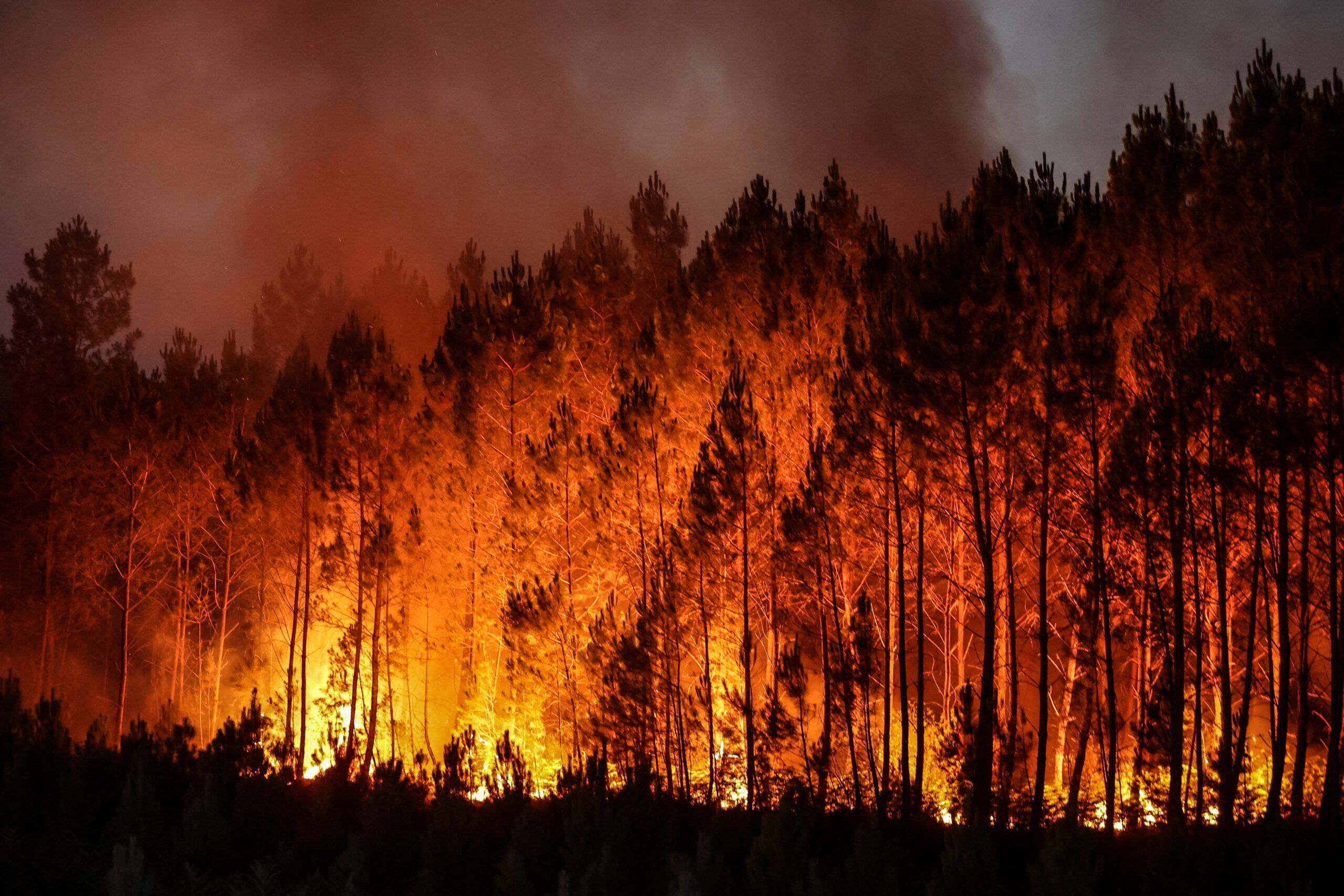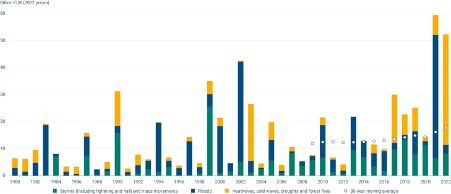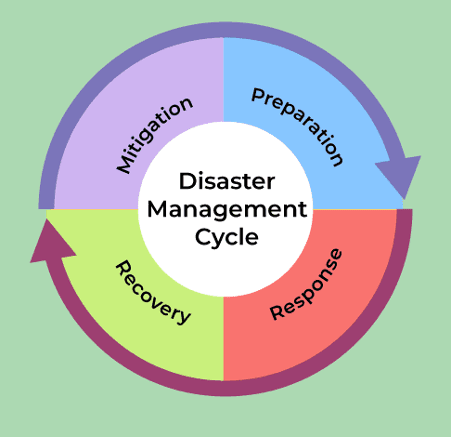Leveraging environmental monitoring for effective disaster management
Blog > Article > Leveraging environmental monitoring for effective disaster management

As the frequency and intensity of natural disasters continues to rise, the need for robust environmental monitoring systems becomes crucial.
From municipalities to private entities, the ability to predict, detect, and respond to events like droughts, fires, and other unprecedented natural hazards hinges on real-time data and proactive measures. Environmental monitoring serves as the backbone of early warning systems, providing vital information for preemptive actions against climate-related risks. Municipalities and private entities are starting to recognise the indispensable role of monitoring systems in safeguarding communities and assets.
Real problem for nations, local governments and businesses
Climate change-induced phenomena such as droughts and fires pose significant challenges to both urban and rural landscapes, threatening ecosystems, livelihoods, and infrastructure. Between 1980 and 2022, climate-related extremes in the EU resulted in economic losses totalling approximately EUR 650 billion. These losses were primarily attributed to hydrological hazards like floods and meteorological disasters such as storms and heatwaves. Despite variations in reporting and asset development, a small percentage of events accounted for a significant portion of economic losses, highlighting the unpredictable nature of these disasters.
The lack of comprehensive insurance coverage further exacerbates the financial impact, with less than 20% of losses being insured, varying widely among countries and event types. To address these challenges, the EU has even embarked on an adaptation strategy aimed at enhancing resilience and reducing economic losses from climate-related events. However, with climate change expected to exacerbate the frequency and severity of such events, concerted efforts are needed to implement adaptation measures and mitigate future losses. Without effective monitoring systems in place, identifying the onset of these disasters becomes difficult, leading to delayed responses and long-term consequences.
 Annual economic losses caused by weather - and climate - related extreme events in the EU Member States (Source: https://www.eea.europa.eu/en)
Annual economic losses caused by weather - and climate - related extreme events in the EU Member States (Source: https://www.eea.europa.eu/en)
Natural disasters can also inflict significant damage on businesses, including infrastructure destruction or supply chain disruptions that can have time and money-consuming consequences. Businesses reliant on a local customer base may also struggle to retain fleeting employees, leading to revenue decline and long-term viability concerns. For businesses to navigate the challenges posed by natural disasters effectively, proactive measures such as disaster preparedness planning and systematic resilience building are of the highest importance. However, all of that is hard to implement without an early-on warning system that could be assured by the environmental monitoring.
Pros of using environmental monitoring as protection from natural hazards
While traditional methods of disaster management often lack the precision and timeliness, environmental monitoring ensures that people in-charge see the approaching danger in real-time and can get prepared to deal with it in advance or even prevent them from happening. It plays a crucial role in all four steps of disaster management: preparedness, mitigation, response, and recovery.
 Diagram showing disaster management system
Diagram showing disaster management system
Preparedness & prevention: Before a disaster strikes, environmental monitoring helps communities and organisations prepare by providing early warning signs and data-driven insights into potential risks. By continuously monitoring environmental conditions such as weather patterns, air quality and hydric stress, stakeholders can identify areas prone to disasters and develop proactive strategies to mitigate their impact. For example, monitoring systems can track changes in temperature and humidity to anticipate the onset of wildfires or droughts, enabling communities to prepare evacuation plans, stockpile resources, and educate residents on safety protocols. What is more, it also gives great insight for insurance companies that can assess risk and accommodate insurance plans accordingly for the more hazardous fields.
Mitigation: Environmental monitoring also plays a vital role in mitigating the impact of disasters by identifying vulnerabilities and implementing preventive measures. By analysing data collected from monitoring systems in form of reports and charts, decision-makers can identify high-risk areas and infrastructure susceptible to damage, allowing for targeted interventions such as strengthening buildings, implementing land-use regulations, and improving drainage systems to reduce flood risk. Additionally, environmental monitoring can inform ecosystem restoration efforts and sustainable land management practices to enhance resilience to natural hazards over the long term.
Response: During a disaster, real-time environmental monitoring provides critical information for immediate response efforts, enabling authorities to assess the situation accurately and allocate resources effectively. Monitoring systems can track the movement of wildfires, enabling strategic deployment of resources as well as prioritising such areas that are posed to the greatest risk.
Recovery: Following a disaster, environmental monitoring continues to play a crucial role in the recovery process by assessing damage, guiding restoration efforts, and monitoring long-term impacts. By collecting data on environmental conditions and ecosystem health, monitoring systems help stakeholders prioritise recovery efforts, allocate funding, and track progress over time. What is more, monitoring vegetation regrowth and soil erosion can help assess the effectiveness of post-disaster interventions and inform adaptive management strategies to promote resilience in the face of future hazards.
Environmental monitoring is more than necessary
Environmental monitoring is integral to all aspects of disaster management, from preparedness and mitigation to response and recovery. By integrating data from various sources such as satellites, ground sensors, and weather stations, these systems can detect anomalies and predict potential hazards with greater accuracy. Real-time monitoring allows authorities to issue timely warnings to at-risk communities, enabling them to implement preventive measures and evacuate if necessary.
Meteory, with its innovative approach to environmental monitoring, plays a helpful role in assisting not only municipalities and public actors but also many private entities in assessing and responding to climate-related risks. Through advanced satellite imaging and data analytics, Meteory provides actionable insights into environmental conditions, facilitating informed decision-making in disaster management. Whether it's detecting early signs of droughts, monitoring fire-prone areas, or assessing flood risks, Meteory's platform empowers stakeholders with the information they need to mitigate potential disasters effectively.
Environmental monitoring is not just a tool for understanding our planet—it's a critical asset in the fight against climate-related disasters that can destroys years of progress and hard work. By investing in monitoring systems and leveraging cutting-edge technologies like Meteory, municipalities and private entities can enhance their resilience and protect lives and assets in the face of unprecedented natural calamities. Early detection, informed decision-making, and swift action are the pillars of effective disaster management, and environmental monitoring serves as the cornerstone of this approach.

Aleksandra Jaworska • May 31, 2024